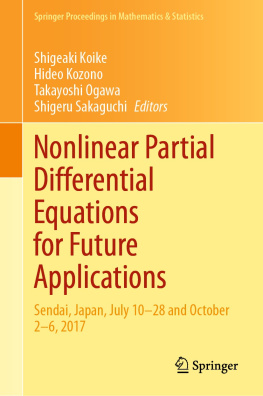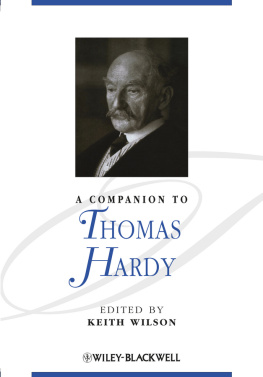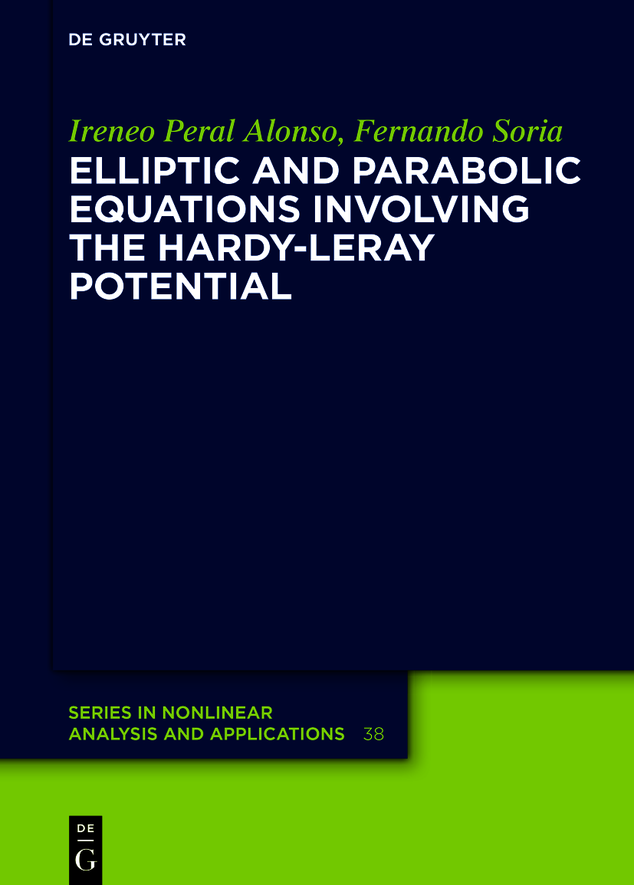De Gruyter Series in Nonlinear Analysis and Applications
Edited by
Jrgen Appell
Catherine Bandle
Alain Bensoussan
Manuel del Pino
Avner Friedman
Mikio Kato
Wojciech Kryszewski
Umberto Mosco
Simeon Reich
Viceniu D. Rdulescu
Volume
ISBN 9783110603460
e-ISBN (PDF) 9783110606270
e-ISBN (EPUB) 9783110605600
Bibliographic information published by the Deutsche Nationalbibliothek
The Deutsche Nationalbibliothek lists this publication in the Deutsche Nationalbibliografie; detailed bibliographic data are available on the Internet at http://dnb.dnb.de.
2021 Walter de Gruyter GmbH, Berlin/Boston
Mathematics Subject Classification 2010: 35A15, 35B25, 35B30, 35B33, 35B40, 35J58, 35B99, 35C15, 35D05, 35D10, 35D30, 35D35, 35J20, 35J25, 35J58, 35J70, 35K05, 35K15, 35K55, 35K57, 35K58, 35R09, 35R11, 45K05, 46E30, 46E35, 47G20,
To our families
This book is dedicated to Magdalena and Angelines, for their love, support and perseverance; to our daughters and son, Irene and Magdalena and Irene, Eva and Alberto; to their spouses, David and Carlos and Carlos, Carlos and Irene; and to five important persons, our grandchildren, Iria, Oscar, Laura and Jaime and Emma.
Preface
This monograph contains part of the work developed by the first author during the last 25 years in connection with the study of solutions to certain elliptic and parabolic partial differential equations associated to the HardyLeray potential. So, the guest star of this story is nothing but
V(x)=1|x|2,xRN,N3,
a potential function that is closely related to the uncertainty principle of Heisenberg in quantum mechanics.
The starting point of the theory is Hardys inequality in one dimension, the only one properly attributed to Hardy. Our interest in this field came when reading the seminal work of Jean Leray [] on the NavierStokes equations, where one can find the proof of a similar inequality to that by Hardy, but this time in dimension three, the natural dimension for these equations.
In the paper [] this inequality was used to study the stability of the extremal solution of a problem related to a reaction combustion model. The idea behind it was to establish a blow-up result. But the first application of what is now called the HardyLeray inequality can be seen in the paper by Jean Leray about the NavierStokes equations quoted above. The HardyLeray inequality also appears as a tool in the study of the Schrdinger equation
iut+u=V(x,t)u,V(x,t)=(ZqQ)4|x|Q4|xv0t|,ZN,t>0.
This describes the wave function of an electron under the action of an -particle with charge Q that, at time t=0 , leaves the nucleus of an atom with velocity v0R3 (see [, Chapter XVIII, page 752758]).
The peculiar behavior of the HardyLeray potential is motivated by the fact that it has the same homogeneity as the Dirichlet integral of the Laplacian when rescaling the space variables. In this sense, a similar behavior is observed for
V(x)=1|x|p,xRN{0},N>p>1,
with respect to the p-Laplacian, i.e., the operator p(u)=div(|u|p2u) . See the paper [], where we began to study some nontrivial extensions of the HardyLeray inequality. In this monograph we do not follow this direction, but suggest the reader to search for the information about the subsequent results in the bibliography.
If we consider
V(x)=1|x|2s,xRN{0},N>2s,0
we will find the same behavior of the homogeneity with respect to the so-called fractional Laplacian that was introduced my M. Riesz in [.
The main goals of this work are to develop the key ingredients to study how the singular potentials
V(x)=1|x|2andVs(x)=1|x|2s,02s,
affect some problems modeled by partial differential equations and integro-differential equations, respectively. It is in this last part in which the cooperation of the authors has been definitively used in a deep way in order to complete the total landscape of both the local and the nonlocal setting.
The HardyLeray potentials, V(x) and Vs(x) , have something fascinating: they complicate the computations and are difficult to handle, but at the same time they provide a very rich set of properties. In this sense V and Vs are both a monster and a friend, as we will try to show in this monograph. We are really in the presence of an old classic theme, especially in the case of V, but with many new results in recent times for both potentials.
An important feature about V(x) is its dimensionless character. This is due to the fact that it corresponds, modulo constants, to the Fourier transform of the fundamental solution of the Laplace equation in any dimension greater than or equal to three.
That is, in the sense of the Fourier transform defined on S(RN) , the dual of the Schwartz class, we find
F(aN|x|N2)()=bN||2.
The same property clearly holds for the potential Vs . See Chapters to find the details.
There are many reasons, coming particularly from physics, about the importance of studying partial differential equations associated to the HardyLeray potential. From a purely point of view, we must say that the potential given by the reciprocal of the square function is a perfect laboratory to study borderline properties or critical behavior in many situations, like the existence of solutions to nonlinear partial differential equations, certain eigenvalue problems, instantaneous and complete blow up and many others.
The same can be said for the fractional Hardy potential, Vs , for which the framework is the fractional Laplacian that in the last years has received a lot of attention of researchers due to the analytical interest and the large amount of applications. The reader, again, can find many interesting references about this in the bibliography.
The first seven chapters of the monograph are devoted to the classical HardyLeray potential V(x)=1|x|2 in dimension N3 .
In Chapter we describe several settings in which the HardyLeray potential appears in a natural way. In quantum mechanics the HardyLeray inequality represents, perhaps, the most elementary way to express the uncertainty principle and provides as well a threshold for many associated results. From the analytical point of view, observing that VLlocN2 , although V(x)Llocp for p, it gives a good example for the spectral theory of the Laplacian in bounded domains.
We will see how the Hardy potential appears in the study of the stability of the singular solution of a reaction of combustion by Frank-Kamenetskii and by Gelfand and collaborators. The HardyLeray inequality also appears in [ we introduce a very useful tool, the Picone inequality.
Chapter deals with the elementary properties of the HardyLeray potential, the proof of the HardyLeray inequality in L2(RN) and, in general, in Lp(RN) ,
. In particular the optimal constant is evaluated and its optimality is proved as well as its nonattainability. To this end, we will also present some results on classical symmetrization. The last section is devoted to obtaining the HardyLeray inequality with a remainder term, which depends on a weighted L2 -norm of the gradient.













